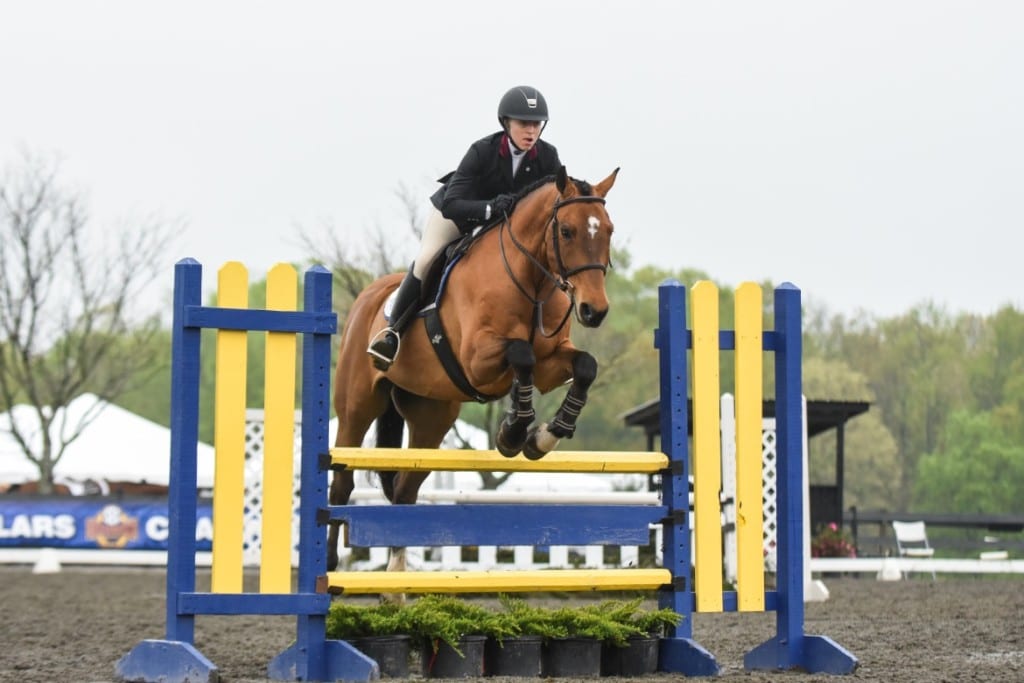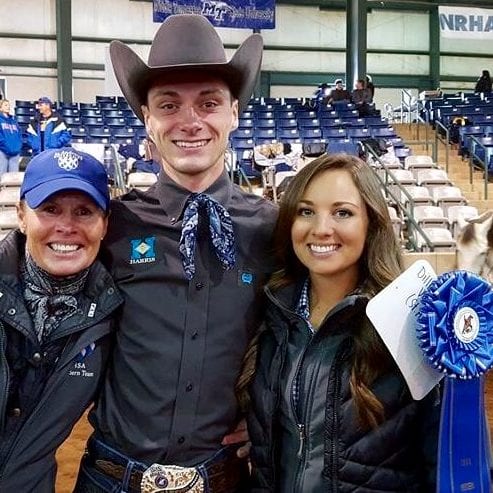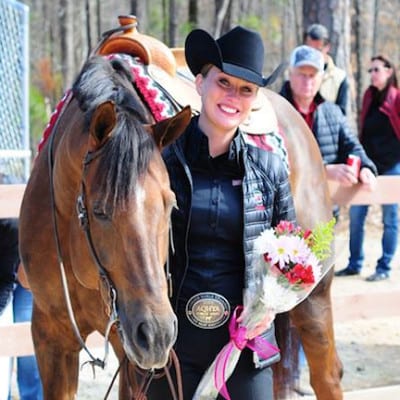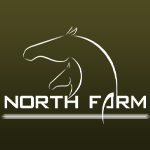School is back in session and high school seniors get to daydream about throwing their graduation caps into the air in six short months. At the same time, high school juniors are beginning to think about gathering and submitting college applications. Finding a college that has the equestrian team of your dreams can be challenging. One question that may cross your mind is, “Should I join NCEA or IHSA?” As someone who has been in this situation and lived to tell the story, I can assure you that finding the right fit for you is possible. Here are some facts about each organization that will better help you understand and assist you in your decision.
The National Collegiate Equestrian Association (NCEA) is associated with the NCAA because they carry both the mission and vision of the NCAA. NCEA teams are made up of female equestrian student-athletes, as males are not allowed to compete (sorry boys). Within the NCEA there are both Western and English teams. Five riders from each team compete on the five horses that are selected for competition. Riders are paired with horses via a draw and there are two riders (from opposite teams) per horse that then compete “head to head.” Not only does each team get a horse description, but also each rider has a four-minute warm-up on the horse they drew.
 Western NCEA teams compete in Horsemanship and Reining. Horsemanship is scored based on a Horsemanship pattern that is made up of seven to nine maneuvers. Each rider is scored on how well they can perform the maneuvers within the pattern. The rider who performs the pattern the most accurately while keeping a “balanced and fundamentally correct body position,” wins their match and receives one point for their team. While reining is scored just as it is in the NRHA (National Reining Horse Association), the judge will look to see that the rider guides the horse through each maneuver and scores accordingly. The pattern is chosen by the judge and is actually an NRHA pattern.
Western NCEA teams compete in Horsemanship and Reining. Horsemanship is scored based on a Horsemanship pattern that is made up of seven to nine maneuvers. Each rider is scored on how well they can perform the maneuvers within the pattern. The rider who performs the pattern the most accurately while keeping a “balanced and fundamentally correct body position,” wins their match and receives one point for their team. While reining is scored just as it is in the NRHA (National Reining Horse Association), the judge will look to see that the rider guides the horse through each maneuver and scores accordingly. The pattern is chosen by the judge and is actually an NRHA pattern.
 English teams compete in hunt seat equitation over fences and hunt seat equitation on the flat. Hunt seat equitation on the flat is judged on how the riders guide the horse through nine maneuvers while keeping themselves in correct hunt seat position. The flat test should appear as smooth and effortless as possible. Now take that same idea, but instead of a flat test think of keeping correct position while jumping, which is the other class hunt seat riders compete in. They are also judged on how they guide the horse through the jumps and how many strides the horse takes in a line. The overall key to this class, and any equestrian class is to plan out your route and how you will maneuver the horse ahead of time.
English teams compete in hunt seat equitation over fences and hunt seat equitation on the flat. Hunt seat equitation on the flat is judged on how the riders guide the horse through nine maneuvers while keeping themselves in correct hunt seat position. The flat test should appear as smooth and effortless as possible. Now take that same idea, but instead of a flat test think of keeping correct position while jumping, which is the other class hunt seat riders compete in. They are also judged on how they guide the horse through the jumps and how many strides the horse takes in a line. The overall key to this class, and any equestrian class is to plan out your route and how you will maneuver the horse ahead of time.
Of course, with any horse showing, the most exciting parts is your show outfit! Within the NCEA they have strict rules that every rider (and coach) must abide by. If one does not follow the “uniform” rule they risk their team being fined a substantial amount of money. For any western rider, a button down shirt must be worn. The button down must be one solid color, as patterns are not allowed on the fabric. Your college’s logo is allowed to be either screen printed or embroidered on the shirt. No rhinestones or other embellishments are allowed on shirts. Scarves are allowed to be worn but must be solid in color.
 English riders must wear ASTM/SEI helmet; the college’s logo can be on the rider’s helmet in the form of a decal but must be placed in a very precise place. The logo decal must be placed on the back of the helmet but it cannot be larger than 2.5” by 2”, and the top of the decal cannot pass 3.25” from the base of the helmet. Hunt shirt, breeches, and hunt coat must follow USEF rules for Hunt Seat apparel. Every NCEA team member has identical show uniforms, which I find to level the playing field as the focus is solely on the rider and their ability to show the horse they have drawn.
English riders must wear ASTM/SEI helmet; the college’s logo can be on the rider’s helmet in the form of a decal but must be placed in a very precise place. The logo decal must be placed on the back of the helmet but it cannot be larger than 2.5” by 2”, and the top of the decal cannot pass 3.25” from the base of the helmet. Hunt shirt, breeches, and hunt coat must follow USEF rules for Hunt Seat apparel. Every NCEA team member has identical show uniforms, which I find to level the playing field as the focus is solely on the rider and their ability to show the horse they have drawn.
After competing throughout the year, the National Championship is held in Waco, Texas. There the top 12 NCEA teams compete in a three-day competition. The three-day competition is composed of Round One, Quarterfinals, Semifinals, and Championship Finals.
If the NCEA doesn’t sound like a fit for you or your dream school is not apart of it, try looking for a school that is a part of IHSA (Intercollegiate Horse Show Association). Being a part of IHSA means both female and male equestrian athletes compete against one another. While on IHSA you not only work as a team to win but you also can compete for yourself individually. As a first time competitor, you must fill out a classification form so that it can be decided which “level” you will compete in. Even if you have never been on a horse before and want to try something new, you are able to compete within IHSA.
 The Western levels are broken up into open, reining (only open riders can compete in reining), advanced, novice, intermediate 1 & 2, and beginner (Walk-Trot). The English levels consist of Walk-Trot Hunter Seat Equitation, Walk-Trot-Canter Hunter Seat Equitation, Novice Hunter Seat Equitation on the Flat, Novice Hunter Seat Equitation over Fences, Intermediate Hunter Seat Equitation on the Flat, Intermediate Hunter Seat Equitation over Fences, Open Hunter Seat Equitation on the Flat, and Open Hunter Seat Equitation over Fences. I believe that the levels were made up to create a level playing field so that riders who have limited riding experience are not showing against world champions.
The Western levels are broken up into open, reining (only open riders can compete in reining), advanced, novice, intermediate 1 & 2, and beginner (Walk-Trot). The English levels consist of Walk-Trot Hunter Seat Equitation, Walk-Trot-Canter Hunter Seat Equitation, Novice Hunter Seat Equitation on the Flat, Novice Hunter Seat Equitation over Fences, Intermediate Hunter Seat Equitation on the Flat, Intermediate Hunter Seat Equitation over Fences, Open Hunter Seat Equitation on the Flat, and Open Hunter Seat Equitation over Fences. I believe that the levels were made up to create a level playing field so that riders who have limited riding experience are not showing against world champions.
 After you’ve been divided into your level, your next step is to practice, and from there your coach with observe all the riders on the team and select a few people (one from each division) to represent the team. The team riders are how the team gets points. Individual riders earn points themselves and can actually point out of their given levels and advance to the next level (with the exception of the open level, in which they compete against one another for AQHA high point rider/Cacchione Cup rider). Even though there is a team rider, everyone on the team can show in his or her individual levels. Sometimes “team riders” are held and not able to show if they show enough potential to show at Nationals.
After you’ve been divided into your level, your next step is to practice, and from there your coach with observe all the riders on the team and select a few people (one from each division) to represent the team. The team riders are how the team gets points. Individual riders earn points themselves and can actually point out of their given levels and advance to the next level (with the exception of the open level, in which they compete against one another for AQHA high point rider/Cacchione Cup rider). Even though there is a team rider, everyone on the team can show in his or her individual levels. Sometimes “team riders” are held and not able to show if they show enough potential to show at Nationals.
Like NCEA, horse descriptions are given to each team but riders are not allowed to have any practice time on their horse before they show them. In flat/rail classes there are multiple people in one class. Riders receive points depending on placement in their class.
 Western and English teams differ slightly in how they get to Nationals. The English teams compete in regular shows, zones, semi-finals then nationals. From each Zone show, only the teams placing first and second move on to Nationals. At nationals, High Point Riders compete in the USEF/Cacchione Cup, which is composed of an over-fences phase and flat phase. Western teams compete in regular shows, regionals, semi-finals, and nationals.
Western and English teams differ slightly in how they get to Nationals. The English teams compete in regular shows, zones, semi-finals then nationals. From each Zone show, only the teams placing first and second move on to Nationals. At nationals, High Point Riders compete in the USEF/Cacchione Cup, which is composed of an over-fences phase and flat phase. Western teams compete in regular shows, regionals, semi-finals, and nationals.
Out of three Western Semi-Finals (across the country) the top three teams move on to nationals, and the top four people of each level move on to nationals. While at nationals, High Point Riders compete in the AQHA Trophy Class for National High Point Rider – this is composed of a rail horsemanship class and a reining class. Each Team class at nationals is placed as a regular show (First place 7 points, Second place 5 points, third place 4 points, fourth place 3 points, fifth place 2 points, and sixth place 1 point) – if a team rider does not place in the team class they do not accumulate points for their team. The team with the highest score at the end of nationals wins.
 Finally, the question I’m sure you’re all wondering is “What should I wear?” Within IHSA you can wear all the bling you want (Western riders) like when you show within AQHA. As for English riders you can wear anything you would wear to show within USEF.
Finally, the question I’m sure you’re all wondering is “What should I wear?” Within IHSA you can wear all the bling you want (Western riders) like when you show within AQHA. As for English riders you can wear anything you would wear to show within USEF.
For more information about either association (as if I haven’t given you enough already), visit their websites at www.collegiateequestrian.com (NCEA) and www.ihsainc.com (IHSA).
Finding the right school for you can be challenging, but deciding on what organization to compete within doesn’t have to be. My hopes are that after reading this article you have gotten a little more insight into the world of collegiate horse showing and all that it has to offer. So the question is NCEA or IHSA – have you decided yet?
——————
For riders interested in joining an NCEA team, it’s important that you (1) understand the recruitment process and the different NCAA rules and (2) fill out the online questionnaires that each team has on their websites. Filling out the online questionnaire is your way of telling the coaching staff that you’re interested in riding on their team, and it’s an opportunity for you to introduce yourself to them and include links to your riding videos.
Step-by-Step Instructions for current High School students
One-stop shop for links to each school’s online questionnaire









